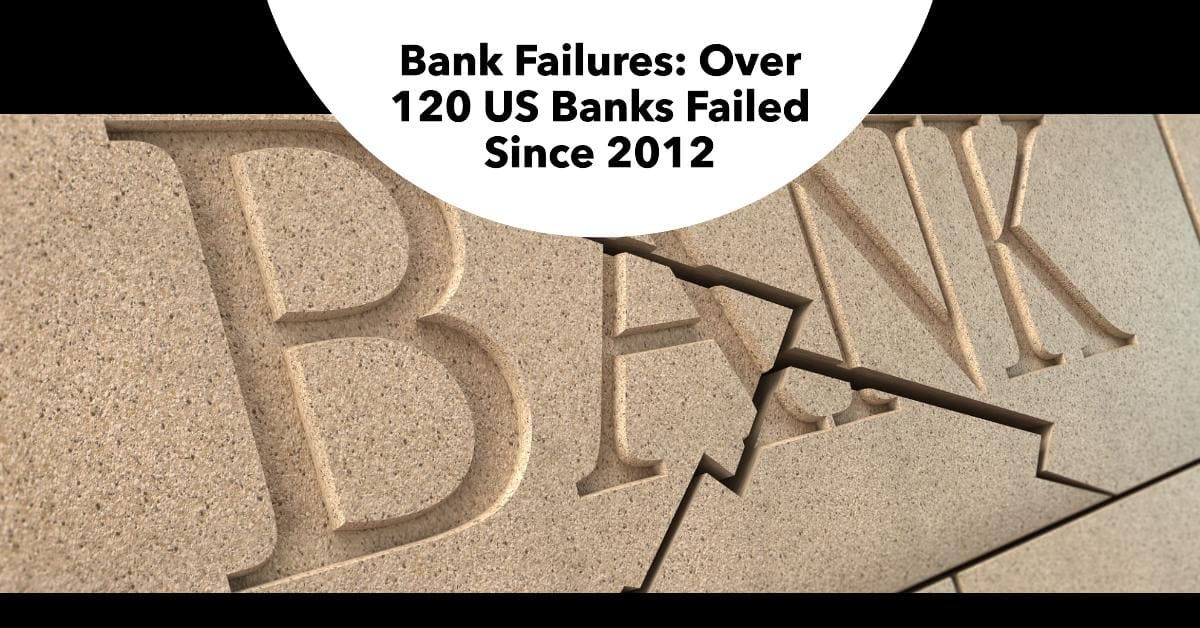The stability of the banking sector is a cornerstone of economic confidence, and the occurrence of bank failures can be a significant indicator of underlying financial health and regulatory effectiveness. Since 2012, the United States has witnessed a fluctuating number of bank failures, reflecting broader economic trends and challenges within the financial industry.
Bank Failures: Over 120 US Banks Failed Since 2012
From 2012 to early 2024, the U.S. experienced over 120 bank failures, a number that underscores the ongoing impact of economic cycles and the importance of robust oversight. The period between 2008 and 2012 was particularly tumultuous, with an average of 93 bank failures per year, largely attributable to the fallout from the Great Recession. This era saw the peak of bank failures in 2010, with 157 institutions closing their doors.
In contrast, the years following 2012 showed a marked decrease in bank failures, with zero occurrences in both 2021 and 2022. This decline can be attributed to the recovery period post-recession, as well as strengthened regulatory frameworks and improved risk management practices within banks. However, the trend was not linear, as 2023 witnessed the collapse of five banks, including major institutions like Silicon Valley Bank and Signature Bank, which were among the largest bank failures in U.S. history.
The reasons behind these failures vary, but common factors include inadequate capital, poor asset quality, and insufficient liquidity. The larger bank failures of 2023 were notable not only for their size but also because they primarily served wealthy customers and startups, with the majority of deposits being uninsured—above the $250,000 FDIC insurance limit.
Looking ahead, the banking industry continues to navigate a complex landscape of evolving risks, including the impact of technology on financial services, changing regulatory environments, and the economic implications of global events. The Federal Deposit Insurance Corporation (FDIC) plays a crucial role in maintaining public trust in the financial system, insuring deposits up to $250,000 and managing the resolution of failed banks.
So, How Does the FDIC Handle Bank Failures?
The Federal Deposit Insurance Corporation (FDIC) is a pivotal entity in the United States banking system, providing a safety net for depositors and maintaining stability within the financial sector. When a bank fails, the FDIC steps in to manage the situation, ensuring that depositors' funds are protected and the impact on the economy is minimized. Here's an overview of how the FDIC handles bank failures:
- Pre-Failure Planning: Before a bank reaches the point of failure, the FDIC works closely with the institution to try and prevent the failure through measures such as seeking merger partners or additional capital.
- Closure and Receivership: If a bank cannot avoid failure, the chartering authority revokes its charter, closes the bank, and appoints the FDIC as the receiver.
- Asset Management and Sales: The FDIC then takes over the bank's assets, selling what it can to recoup funds. This process involves detailed marketing and valuation to ensure maximum recovery.
- Claims Settlement: The FDIC identifies and verifies claims against the failed bank, paying out according to the priority of claims. This includes ensuring insured depositors receive their funds up to the insured limit of $250,000.
- Continuity of Services: To minimize disruption, the FDIC aims to provide a seamless transition for the bank's customers, often arranging for another institution to take over accounts and services.
- Legal Actions: The FDIC may also pursue legal actions against individuals whose actions may have contributed to the bank's failure, seeking to recover losses and deter misconduct.
- Ongoing Monitoring: Even after the immediate resolution, the FDIC continues to monitor the situation, managing any ongoing agreements and ensuring the orderly wind-down of the failed bank's affairs.
The FDIC's approach is methodical and structured, designed to protect depositors and maintain confidence in the banking system. Through its resolution process, the FDIC plays a critical role in safeguarding the financial health of the nation.
As we reflect on the past decade of bank failures, it is clear that the health of the banking sector is inextricably linked to broader economic stability. The lessons learned from these failures are vital for informing future regulatory policies and ensuring the resilience of financial institutions. For consumers and businesses alike, understanding the dynamics of bank failures is essential for making informed financial decisions and contributing to a stable economic future.
For more detailed information on the FDIC's process and historical data on bank failures, you can visit the FDIC's official resources.
ALSO READ:
- Which Banks Are in Danger of Failing or Collapse (2024)
- List of FDIC-Insured Banks in 2024: Is Your Bank Insured?
- 10 Ways to Insure Deposits Beyond the FDIC Limit of $250,000
- Bank Insurance: How Does FDIC Deposit Insurance Work?
- List of Recent Failed Banks in the United States (2023-2024)
- Is My Money Safe in the Bank in 2024?
- US Banking System Insolvency: Is a Crisis Coming Up?



